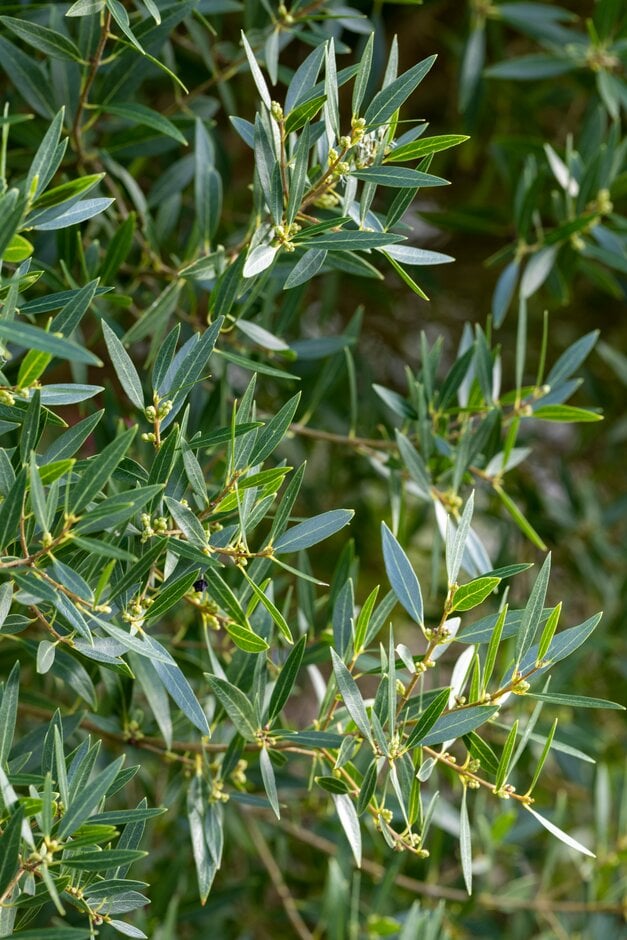Phillyrea angustifolia f. rosmarinifolia
rosemary-leaved mock privet
A dense and compact evergreen shrub to 1.5m tall, with narrowly linear, dark green leaves. In early summer it produces small, creamy-white flowers, which although insignificant are pleasantly fragrant. A good plant for hedging or topiary

Buy this plant
Size
Ultimate height
1–1.5 metresTime to ultimate height
5–10 yearsUltimate spread
1–1.5 metresGrowing conditions
Moisture
Well–drainedpH
Acid, Alkaline, NeutralColour & scent
| Stem | Flower | Foliage | Fruit | |
| Spring | Green | |||
|---|---|---|---|---|
| Summer | Cream White | Green | ||
| Autumn | Green | |||
| Winter | Green |
Position
- Full sun
- Partial shade
Aspect
East–facing or South–facing or West–facing
Exposure
Sheltered Hardiness
H5Botanical details
- Family
- Oleaceae
- Native to GB / Ireland
- No
- Foliage
- Evergreen
- Habit
- Bushy
- Genus
Phillyrea are evergreen shrubs with simple, opposite, leathery leaves and small, often fragrant white flowers, followed by purple to black berries
- Name status
Correct
- Plant range
- N Africa & S Europe
How to grow
Cultivation
Grow in fertile, well-drained soil in full sun or partial shade, with shelter from cold, drying winds
Propagation
Propagate by semi-ripe cuttings in summer or layering in autumn
Suggested planting locations and garden types
- City and courtyard gardens
- Coastal
- Low Maintenance
- Hedging and screens
Pruning
See pruning group 1 or pruning group 8
Pests
May be susceptible to Phillyrea whitefly
Diseases
May be susceptible to honey fungus in gardens where it is present but insufficient data to determine degree of susceptibility
Get involved
The Royal Horticultural Society is the UK’s leading gardening charity. We aim to enrich everyone’s life through plants, and make the UK a greener and more beautiful place.